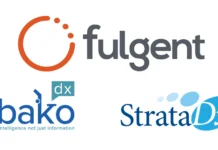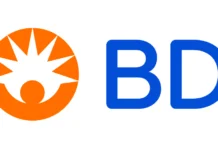The new round of tariffs by President Donald Trump, this time targeting copper, has gone on to intensify concerns with regard to rising costs through major sectors, including healthcare.
However, in spite of the significant price pressure on aluminum, steel, and copper, all of which happen to be very vital to medical device production, there is no indication that US hospitals are stockpiling the equipment ahead of the anticipated price hike, as per the recent findings from GlobalData.
It is well to be noted that the recently announced Trump’s 50% tariff when it comes to copper imports happens to match the doubled rates that are already in effect when it comes to steel as well as aluminum. This could mean that the US medical device costs may as well bloat-up. As expected, the White House has already defended these actions, which are imposed under Section 232 of the Trade Expansion Act of 1962, as a necessary requirement in order to protect the US national security and, at the same time, revive the domestic manufacturing. However, with these kinds of tariffs, which are applied indiscriminately throughout all the import sources, which exclude only the United Kingdom on certain sets of metals, concerns are even mounting over the downstream impact, specifically for those industries that are dependent on foreign raw materials.
As per medical analyst at GlobalData, Amy Paterson, although these tariffs are most likely to impact distribution and at the same time increase the consumer costs, there are some facilities that may not have the financial resources in order to buy the devices well in advance. She added that while there are some markets that have already seen a growth in spending, it does not appear that the healthcare facilities are indeed stocking up when it comes to medical devices in order to prepare themselves for a potential price increase or even supply chain disruptions for that matter.
The increased tariffs when it comes to these essential metals will inevitably lead to growing healthcare costs, as manufacturers will pass on additional expenses to the hospitals and the medical facilities. This comes at a particularly challenging time for the healthcare sector, which is still recovering from the pandemic-related financial stress and now happens to face inflationary pressure across all operational elements. This kind of cost escalation could as well potentially delay the critical equipment upgrades and, at the same time, infrastructure improvements, especially when we talk of budget-conscious public health systems and developing nations where medical resources are already stretched thin.
Besides this, these materials happen to play a very specialised role in medical applications, which are difficult to substitute. Surgical-grade stainless steel, for example, offers unique corrosion resistance and durability, which is required for repeated sterilization. Medical-grade aluminum offers the ideal combination when it comes to lightness and strength for portable diagnostic equipment. The superiority of copper conductivity as well as anti-microbial properties makes it indispensable across sensitive medical electronics and, at the same time, infection control applications. The limited alternatives happen to mean that healthcare providers may have no choice but to absorb the rising costs, potentially compromising the other areas of patient care or, even for that matter, medical research funding. US medical device costs are indeed going to feel the pressure of such scenarios.
This kind of situation highlights the delicate balance between trade policy and healthcare accessibility. While the tariff may serve important economic objectives, however, its effects on medical technology costs can inadvertently affect the patient outcomes as well as healthcare affordability. This kind of development warrants very careful consideration coming from policymakers in order to make sure that the public health priorities are adequately safeguarded when it comes to trade decision-making processes.
Apparently, the US healthcare facility invoicing database of GlobalData, which happens to track procurement activity throughout 56 medical device categories, happens to show no significant signs of any kind of an increase when it comes to healthcare expenditures between January and May 2025.
Even when we see the May as well as the June data, as they continue to roll in, early signs happen to suggest that the healthcare purchasing behavior is still consistent and balanced, and there is no preemptive action that has been seen.
It is worth noting that this kind of spending inertia comes in spite of the broad signals that the cost pressures when it comes to the US healthcare providers may even worsen. Unlike certain exemptions, which are already applied to pharmaceuticals or even food products, the latest tariffs happen to make no carve-outs in terms of medical equipment or, for that matter, life-saving devices.
All of this goes on to mean that hospitals, which are already facing very tight budgets as well as post-pandemic financial issues, may as well have to absorb the cost of equipment, which is much higher, or may as well pass it on to the patients.
All put together, the policy shift along with the trade actions happens to illustrate a very broad Trump administration approach, which happens to be centred on cutting international dependencies in spite of the sector in question.
When it comes to the metals, the administration goes on to argue that cheap imports coming from China and also elsewhere have flooded the worldwide markets, thereby putting the US producers out of business and even threatening industrial self-sufficiency. The move to go ahead and double the tariffs on steel and aluminum reflects this ambition. Copper, which has been added to this list, goes on to signal a consistent and continued hard line that the administration has taken that could affect everything right from consumer electronics to defence manufacturing.
It is worth noting that the US apparently happens to import more than 50% of its aluminum and about one-third of its copper, most of it from countries such as Chile and Canada. By way of raising the costs when it comes to these metals, the administration looks forward to encouraging domestic mining as well as refining. But when it comes to the short term, there is no shred of doubt that the US industries are actually bleeding, and this has to be addressed.


















